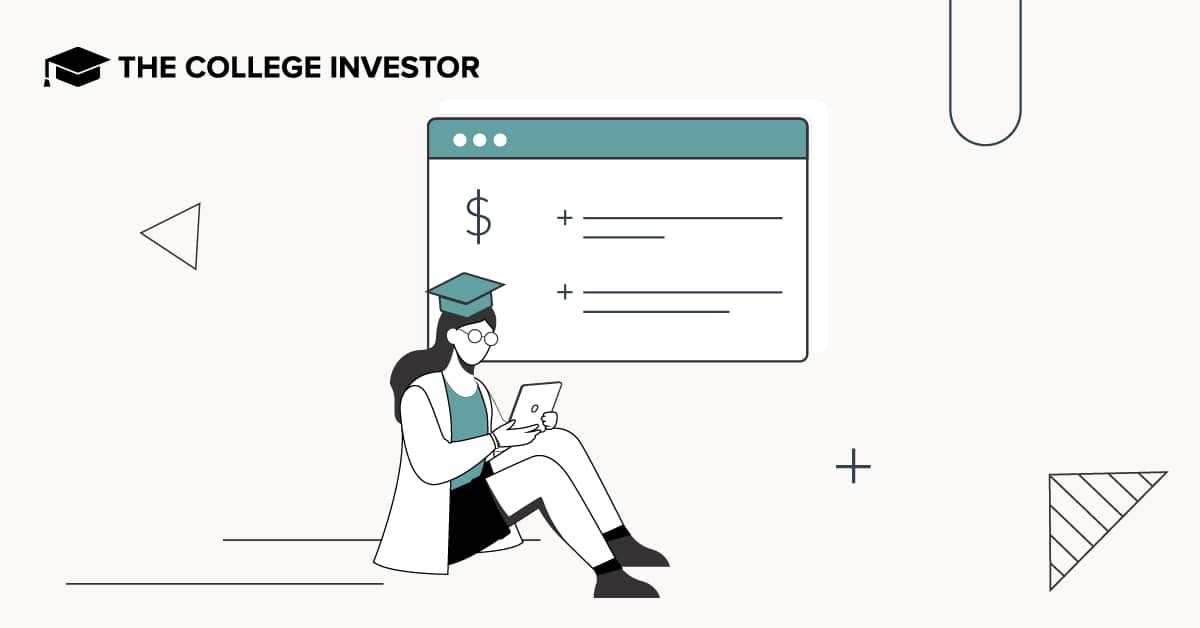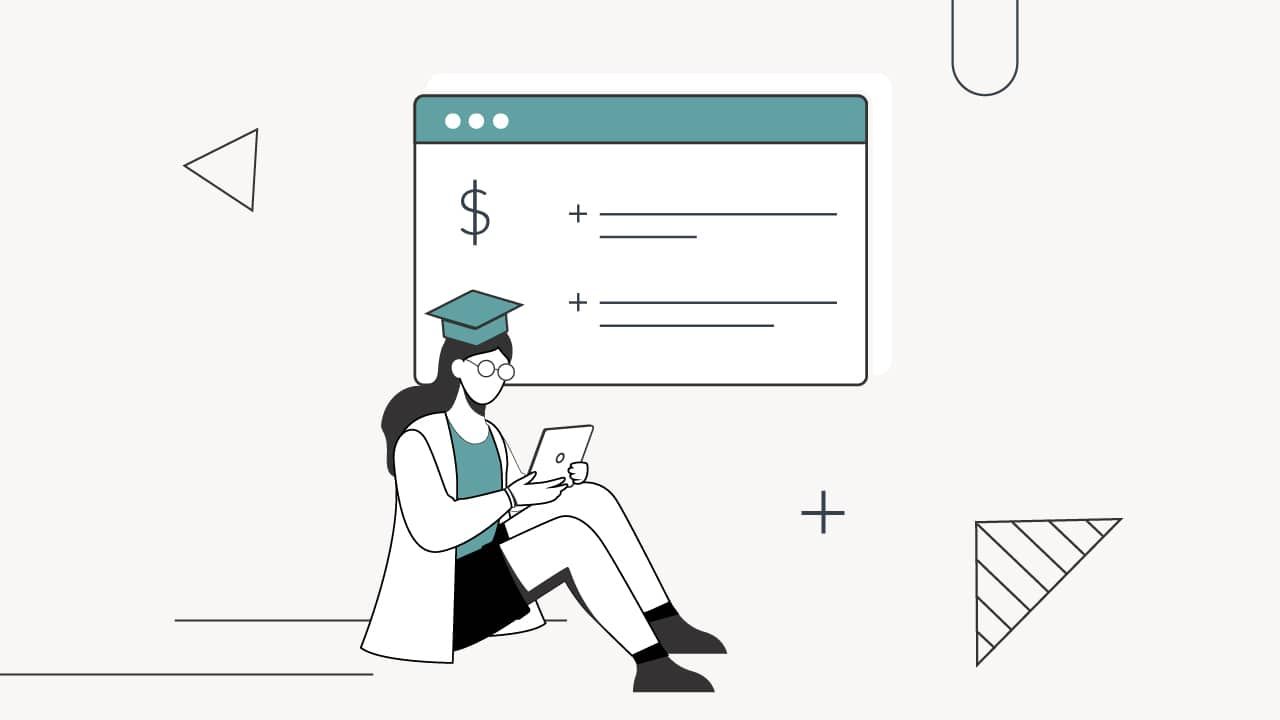
It's no secret that the cost of going to college and debt from student loans have significantly increased over the past several decades. Although wages have also gone up, the cost of higher education has increased more than inflation. The average cost of tuition for a four-year private college is $43,775 and $28,238 for public. And what's even scarier is that the most expensive colleges cost over $60,000 per year!
Many potential college students explore community college because it offers cheaper tuition than traditional four-year colleges. In 2022, the average tuition for public community colleges is approximately $4,988 per year for in-state students and $8,713 for out-of-state students.
So while going to a community college is more affordable than other forms of higher education, you still may need to explore student loans for community college to cover the cost.
Can You Go To Community College For Free?
Before considering taking out any student loans for community college, you should check to see if you can go to community college for free. Many states and local jurisdictions have programs that offer free tuition for community colleges and some other education institutions. For example, the California College Promise Grant offers free community college to eligible California residents.
It's important to realize that getting free community college tuition from one of these programs doesn’t mean that you won’t have any expenses. There will be costs for books, fees, and housing expenses if you aren't living at home.
Still, before you look at student loans for community college, you may want to explore any options you have for free community college tuition. That way, you'll have a better idea of how much you'll need to take out in community college student loans.
Fill out the FAFSA
In order to get student loans for community college, you'll follow the same process as getting loans for any other institution of higher learning.
The first step towards community college student loans is filling out the FAFSA. The FAFSA or Free Application for Federal Student Aid will have you give information about your income and, if applicable, your parents' incomes.
If you don't fill out the FAFSA, you will not be eligible for any federal student loans. It's also important to understand that you need to fill out the FAFSA each and every year. This is because your income and financial situation changes every year, which can affect how the amount of federal loans you might be eligible for.
While most community colleges do accept federal student loans as payment, some do not. If you're not sure, you can see if your college is listed in the Federal School Code Search site.
Federal Student Loans for Community College
If you're eligible for them and your community college accepts them, you'll want to first consider federal student loans. There are three types of federal student loans for community college students that you'll want to consider:
Direct Subsidized Loans — for undergraduate students with a demonstrated financial need. There are no interest charges while you're in school, while your loan is in deferment or during the grace period (usually six months after you graduate or leave school)
Direct Unsubsidized Loans — unsubsidized loans are available to all students, even if there is not a demonstrable financial need. Unlike subsidized loans, the interest on unsubsidized loans accrues while you're in school. That means it's added to the loan balance that you have to pay off once you graduate.
Direct PLUS Loans — Parent Loan for Undergraduate Students (PLUS) loans are for the parents of undergraduate or graduate students. Parents who sign up for a PLUS loan are directly responsible and liable for paying off the PLUS loan. Like unsubsidized loans, interest on PLUS loans accumulates even when the student is still in school.Federal student loan limits for community college students are the same as loan limits for students at any other college.
Private Student Loans for Community College
If federal student loans aren't sufficient for your particular situation, you may want to consider private student loans for community college students. Private student loans are awarded based on the borrower's financial situation and credit history. So if you are a young student, you may not qualify for private student loans unless you have a solid employment and credit history, or you get a cosigner.
And if you do qualify as the student, the interest rates and terms on your private student loan may not be very attractive unless your credit score is good or excellent. That may mean that you'll need to get someone like a parent to apply or cosign for your private student loan.
The good news is that if you or your cosigner have excellent credit, the rates on private student loans can be even lower than those on federal student loans. One downside of private student loans however is that they won't qualify for federal programs like potential student loan forgiveness.
Note: While private student loans are an option, they should be the very last resort. And there are almost no scenarios where you should use private loans for community college. The Federal loan limits should cover your needs, and Federal loans are always better than private loans.
Our Top Picks For Student Loan Lenders
Lender Name | APR | Get Started |
|---|---|---|
Variable Rate 5.39% - 16.99% Fixed Rate 4.43% - 15.99% | ||
Variable Rate 6.17% - 16.11% Fixed Rate 4.13% - 15.46% | No Cosigner Required! | |
Variable Rate 5.62% - 18.26% Fixed Rate 4.42% - 15.90% | ||
Variable Rate 6.07% - 11.34% Fixed Rate 4.39% - 10.39% |
Lender Name | APR |
|---|---|
Variable Rate 5.39% - 16.99% Fixed Rate 4.43% - 15.99% | |
No Cosigner Required! | Variable Rate 6.17% - 16.11% Fixed Rate 4.13% - 15.46% |
Variable Rate 5.62% - 18.26% Fixed Rate 4.42% - 15.90% | |
Variable Rate 6.07% - 11.34% Fixed Rate 4.39% - 10.39% |
The Bottom Line
Community college can be a viable alternative for many people than a traditional four-year school. This is especially true if you're in a situation where you're not sure about what to major in or what you want to be when you grow up. Attending a community college can help you explore different subjects while keeping costs down.
While expenses at a community college are typically lower than those at four-year schools, you may still want to get student loans for community college. The first step is to fill out the Free Application for Federal Student Aid (FAFSA), and then you can choose between federal student loans for community college and private student loans for community college.
No matter what option you choose, it's a good idea to be aware of your loan balance and keep your costs down whenever possible.
Robert Farrington is America’s Millennial Money Expert® and America’s Student Loan Debt Expert™, and the founder of The College Investor, a personal finance site dedicated to helping millennials escape student loan debt to start investing and building wealth for the future. You can learn more about him on the About Page or on his personal site RobertFarrington.com.
He regularly writes about investing, student loan debt, and general personal finance topics geared toward anyone wanting to earn more, get out of debt, and start building wealth for the future.
He has been quoted in major publications, including the New York Times, Wall Street Journal, Washington Post, ABC, NBC, Today, and more. He is also a regular contributor to Forbes.
Editor: Claire Tak



